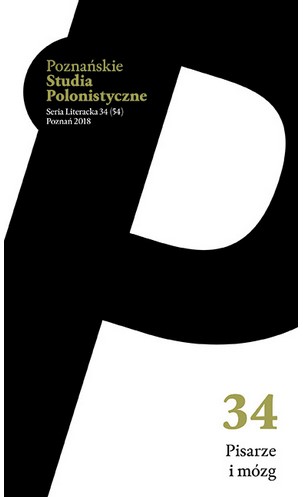Aposiopesis albo figury myśli w dobie ucieleśnionego umysłu
Aposiopesis or figures of thought in the space of art and the brain
Author(s): Aneta GrodeckaSubject(s): Music, Visual Arts, Philosophy of Language, Neuropsychology, Phenomenology, Hermeneutics
Published by: Wydawnictwo Poznańskie Studia Polonistyczne
Keywords: rhetorical figures; neuropsychology; study on reception; philosophy of language; neurophenomenology; neurology; poetry; painting; music;
Summary/Abstract: The Author is interested in the states of becoming silent, discontinuing one’s utterance, which are associated with certain mechanisms of the functioning of the brain, as well as in the observation of such states in different artistic disciplines. Looking for an answer to the question how aposiopesis operates in words, sounds, and images, she analyzes pieces of music, poems (Zbigniew Herbert’s Pora), and examples of visual arts (Wojciech Pakmur’s paintings of the tango). In her reconstruction of the research field, the Author refers to rhetoric ( Jerzy Ziomek, Seweryna Wysłouch), the philosophy of language (Michel Foucault, Jean-François Lyotard), and neurophenomenology. The aim of the article is to suggest a new mode of reading that seeks inspiration and language in works from the field of neuropsychology (Maria Pąchalska), hermeneutic phenomenology (Mark Johnson), or neurology (António Damásio, Oliver Sacks). The Author’s analyses refer to Raoul Schrott and Arthur Jacobs’s concept (Gehirn und Gedicht, 2011), and the conclusions confirm that one should not look for a model (pattern) in the reception of art, but describe mental processes.
Journal: Poznańskie Studia Polonistyczne. Seria Literacka
- Issue Year: 2018
- Issue No: 34
- Page Range: 87-105
- Page Count: 20
- Language: Polish

